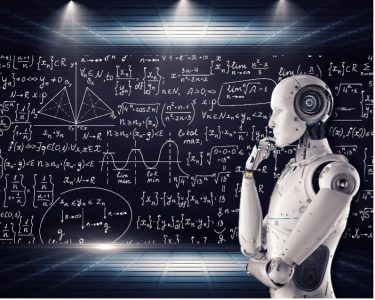Widgetized Section
Go to Admin » Appearance » Widgets » and move Gabfire Widget: Social into that MastheadOverlay zone
A Fourth Industrial Revolution? Exploring the Future of Artificial Intelligence
The views expressed are those of the author and do not necessarily reflect the views of ASPA as an organization.
By The VCU Wilder School Office of Research and Outreach
January 10, 2025

How will artificial intelligence shape the future? What strategies can be adopted to minimize negative effects, promote worker adaptability and ensure inclusive growth? To address these and other questions, Dr. Luísa Nazareno, an assistant professor at the L. Douglas Wilder School of Government and Public Affairs at Virginia Commonwealth University, shared her research and perspectives on AI during a recent Wilder School Lunch and Learn virtual session. In this session, she discussed the intersecting impacts of AI, how AI may impact the workplace, and the future of AI and public policy.
Nazareno began by providing a historical overview of technological revolutions. She explained that technological advancements often occur in waves, starting with the Industrial Revolution driven by steam engines and railroads in the early 19th century. Subsequent waves included the introduction of electricity and assembly lines in the late 19th century, followed by the advent of computers, semiconductors and the internet in the 20th century. These revolutions not only reshaped employment structures but also created new opportunities for workers to advance.
“Certainly, technology does and can eliminate jobs, but it also generates new ones,” she said. “So I’ll start by saying that a jobless future is not something that I anticipate would happen. In all of these waves, it’s also important to notice that technology has led to prosperity and wealth.”
However, she also acknowledged that while technological advancements have improved lives, they have not guaranteed equitable distribution of prosperity. Nazareno emphasized the importance of consciously addressing equity to ensure a fairer future. Predicting AI’s impacts, she noted, depends on factors such as the pace of technology adoption, the methods of implementation, societal responses and the assumptions underlying predictive models. These models help estimate AI’s effects on productivity, GDP and employment risks across sectors.
Nazareno’s research suggests that, unlike previous technological revolutions, AI may pose a greater challenge to highly educated workers in certain cases. She noted that AI could enhance roles rather than replace them, particularly for less experienced workers.
“OpenAI and others have been conducting studies that show that Generative AI specifically [with ChatGPT as the main example] can disproportionately benefit less experienced workers by making them more productive and helping them compete with the most experienced ones,” Nazareno said.
Concerns over AI’s impact on the job market are common among members of the general public. In our August 2023 Wilder School Commonwealth Poll, we asked participants “In the next 10 to 20 years, how likely do you think it is that AI will perform most of the job tasks that people do now?” Overall, nearly two-thirds (63 percent) of Virginians said they believe it is likely or very likely that AI will perform most of the job tasks that people do now in that timeframe.
The poll also asked whether participants thought that the development of AI would be a more positive or negative change for American society. In response to this question, the majority of Virginians (53 percent) said they believe the effect would be negative, while 30 percent believed that the changes would be positive. When we consider demographic differences in response, younger people were more likely than older people to believe that the changes would be positive, with 46 percent of respondents ages 18 to 34 citing a positive impact of AI, compared with 25 percent of those 55 and older and 23 percent of 35- to 54-year-olds. Responses also varied by ethnicity and race, with 46 percent of Hispanic or Latino Virginians believing that the effect of AI would be more positive, compared with 27 percent of white Virginians and 18 percent of Black Virginians.
Finally, Nazareno’s presentation highlighted expectations for AI’s future and potential policy responses to safeguard workers and promote equitable AI adoption. She noted that over 480 AI-related bills were introduced in United States legislature in 2024, addressing a wide range of issues and outcomes. To conclude the session, Nazareno discussed the impacts of enacted laws and engaged with audience questions during the session.
“This should be a conversation where we have people wearing different hats at the same table,” Nazareno said. “And in this regard, my ongoing research is precisely trying to reach out and build bridges between academia and the policy world such that we can bring what we’re talking about and what we’re learning here to people making decisions, and hopefully that will help us make better decisions.”
Author: The Wilder School’s Center for Public Policy advances research and training that informs public policy and decisionmaking to improve our communities. Drawing on the wide-ranging expertise of Wilder School faculty, we provide services including leadership development and training, economic and policy impact analysis, survey insights and program evaluation to clients in governments, nonprofits, businesses and the public, across Virginia and beyond. Twitter: @VCUWilderSchool


Chin-I Chen
January 12, 2025 at 8:49 am
The development of human artificial intelligence mainly serves administrative services for ethical public interests. How to develop AI under social needs, procedures and situations?